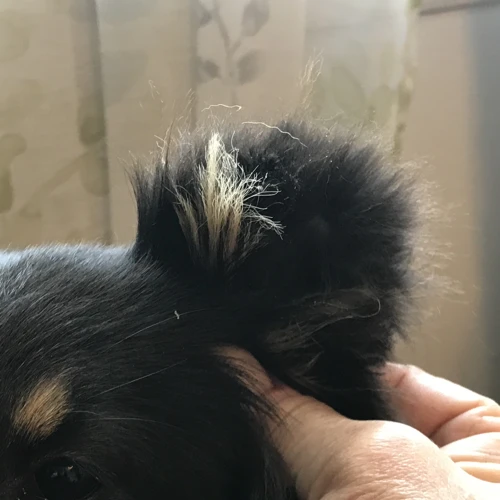Gluing dog ears is a practice that has been around for quite some time within certain dog communities. It’s a technique used by some owners to help shape or correct the ear carriage of their dogs, especially in breeds where a certain ear shape or position is desired for show standards or aesthetic preferences.
Why Owners Choose to Glue Dog Ears
There are several reasons why an owner might opt to glue a dog’s ears. For breeds like German Shepherds, Dobermans, or Shelties, the correct ear position is an important aspect of breed standard appearance. Some owners believe that gluing can help train the ear cartilage to harden in the correct position, ultimately creating the desired look without the need for surgical intervention.
Best Glue for Gluing Dogs Ears
Choosing the right adhesive is critical for the safety and comfort of your pet. The best glue for gluing dogs ears is one that is specifically designed for this purpose, offering a gentle yet strong hold while being safe for use on your dog’s sensitive skin. It’s important to avoid regular household glues as they can be toxic and cause irritation or allergic reactions.
When Is It Too Late to Glue Dog Ears
The timing of ear gluing is crucial; starting too late can result in ineffective shaping as the cartilage in the ears may have already hardened. The ideal window for this practice is when a puppy is young and still developing, usually before it reaches a certain age.
When Is It Too Late to Glue Sheltie Ears
When it comes to Shelties, the period when their ears can be successfully glued is relatively short. Typically, ear gluing should be initiated when the puppy is around 8 to 12 weeks old. Beyond this age, the cartilage in the ears becomes firmer, and gluing them may not produce the desired effect. If you’re considering this for a Sheltie, timing is everything.
How to Safely Apply Dog Ear Glue
Applying glue to a dog’s ears must be done with care and precision. It’s a delicate process that requires patience and an understanding of the correct technique to ensure the dog’s safety and comfort.
Step-by-Step Guide on Gluing Ears Dogs
- Begin by cleaning the dog’s ears to ensure they are free of dirt and oils.
- Carefully apply a small amount of dog ear glue to the appropriate area following the product’s instructions.
- Gently position the ear in the desired shape and hold it in place until the glue sets.
- Monitor the dog’s reaction and comfort level throughout the process.
Tips for Ensuring the Glue for Dog Ears Sets Correctly
- Ensure the ear is completely dry before applying any adhesive.
- Apply the glue sparingly to avoid excess that can cause discomfort.
- Allow the glue to set fully, as per the product’s recommended time, before letting the dog resume normal activity.
Potential Complications and Risks of Ear Gluing
While many owners have successfully glued their dog’s ears without issue, there are potential complications and risks associated with this practice. It’s important to be fully informed before deciding to proceed.
Common Issues with Glue for Dogs Ears
Some of the more frequent problems include skin irritation, allergic reactions, or infections caused by improper application or maintenance. It’s vital to keep a close eye on the dog’s ears for any signs of discomfort or abnormality.
How to Address Gluing Mishaps
If you notice any issues, it’s essential to remove the glue immediately and consult a veterinarian. They can provide guidance on treatment and suggest whether it’s safe to attempt gluing again.
Alternatives to Ear Gluing
For those who are uncomfortable with the idea of gluing their dog’s ears or have missed the optimal time frame, there are alternatives to consider.
Natural Methods to Support Ear Health and Posture
- Regularly massaging the base of the ears can sometimes encourage them to stand properly.
- Ensuring the dog receives proper nutrition can support healthy cartilage development.
- Some owners use ear forms or taping as a less invasive method of encouraging proper ear set.
Frequently Asked Questions About Ear Gluing
There are numerous questions that dog owners have about the practice of gluing ears. Here are some of the most common queries:
Is There an Age Limit for Gluing Dog Ears?
Yes, there is typically an age limit. The process is most effective when the puppy’s ear cartilage is still soft, usually before the age of 6 months. However, the exact age can vary depending on the breed.
Can Ear Gluing Cause Long-Term Damage?
If done incorrectly or with the wrong materials, ear gluing can cause damage such as chronic irritation or disfigurement. Always use appropriate glue for dog ears and follow best practices.
How Long Should You Keep Ears Glued?
The duration for which the ears should be glued can differ by breed and individual dog, but it generally ranges from a few weeks to several months. Monitoring and adjustments are key during this time.
If you’re a DIY enthusiast or someone who enjoys crafting, understanding different types of glue and their drying times can be essential for your projects. You may be interested in learning how to make slime without Elmer’s glue, or perhaps you’re curious about traditional adhesives and wonder how long does hide glue take to dry. For more common household applications, you might find our article on how long it takes for Elmer’s glue to dry quite useful. However, if you’re here for pet care advice, specifically regarding the timing of gluing dog ears, please consult with a professional veterinarian for the best and safest practices.
Should You Consult a Vet Before Gluing Ears?
Consulting a vet before starting the gluing process is highly recommended. They can offer advice, demonstrate proper techniques, and help you understand the potential risks involved.
Overall, understanding when is it too late to glue dog ears and how to apply dog ear glue safely is crucial for any owner considering this practice. It’s a decision that should not be taken lightly and must always prioritize the wellbeing of your furry friend.

